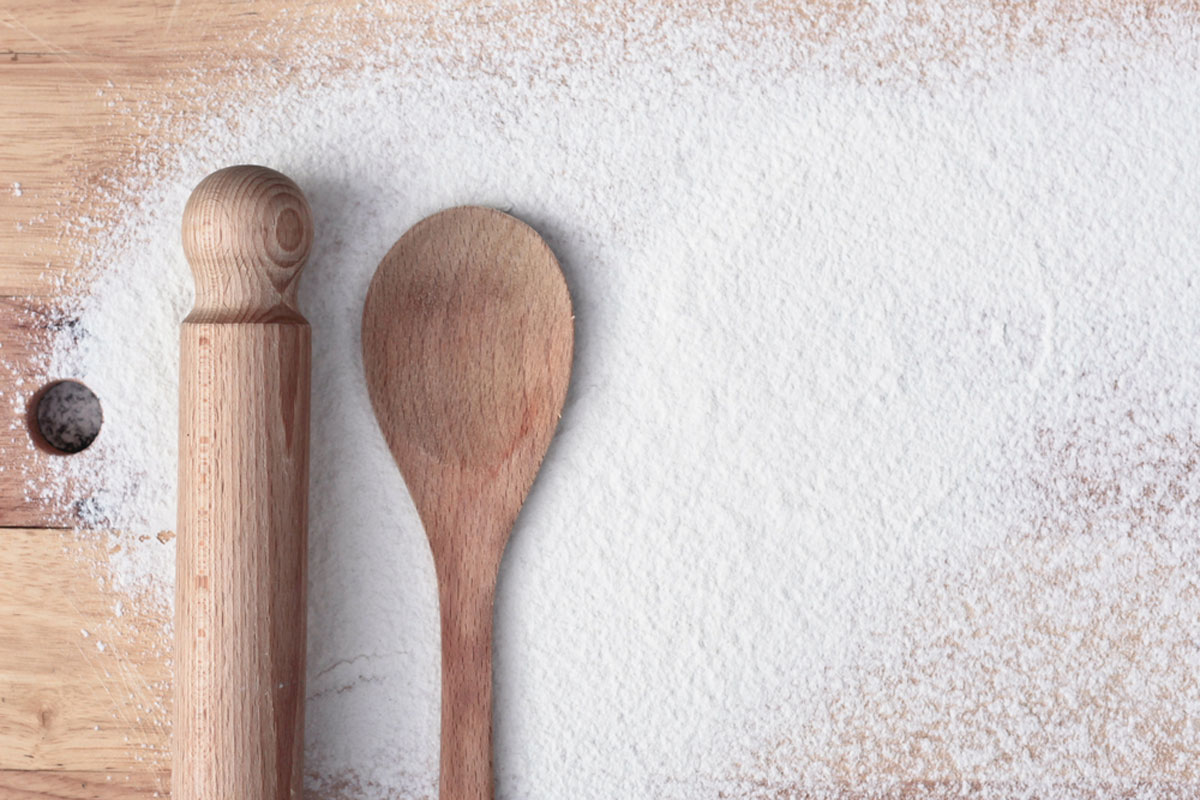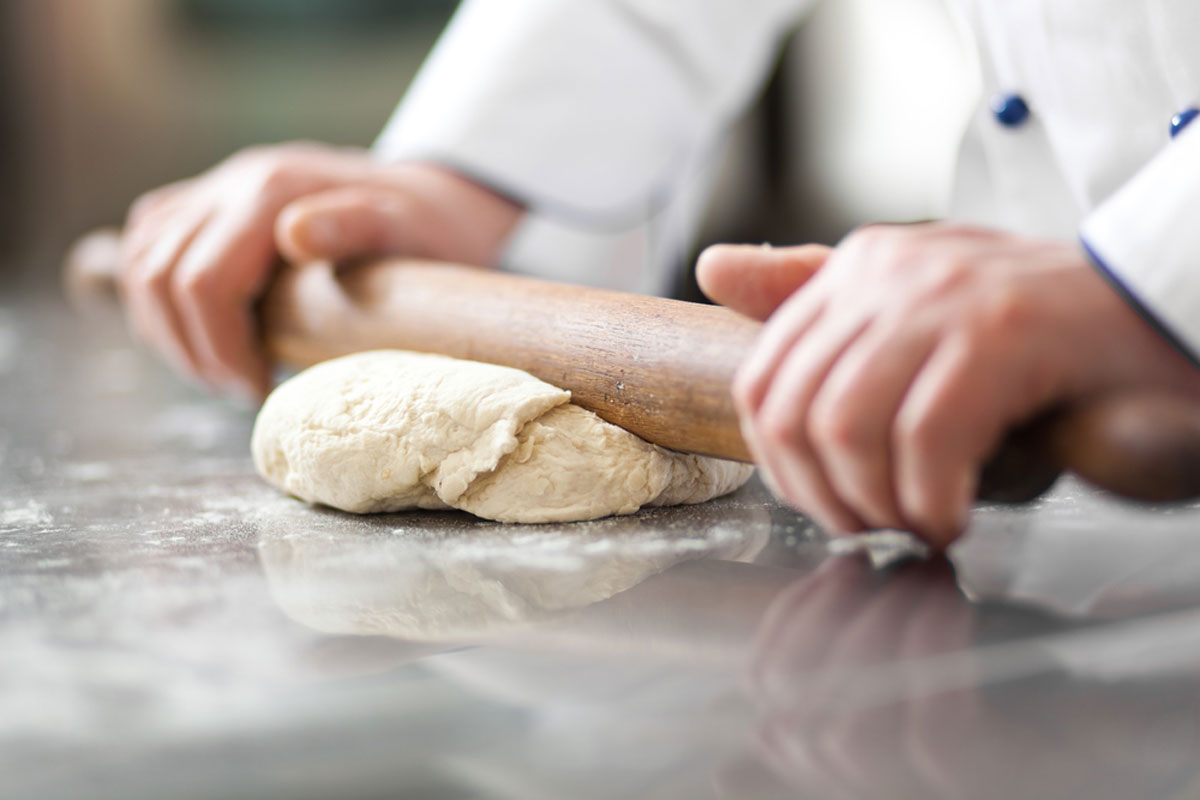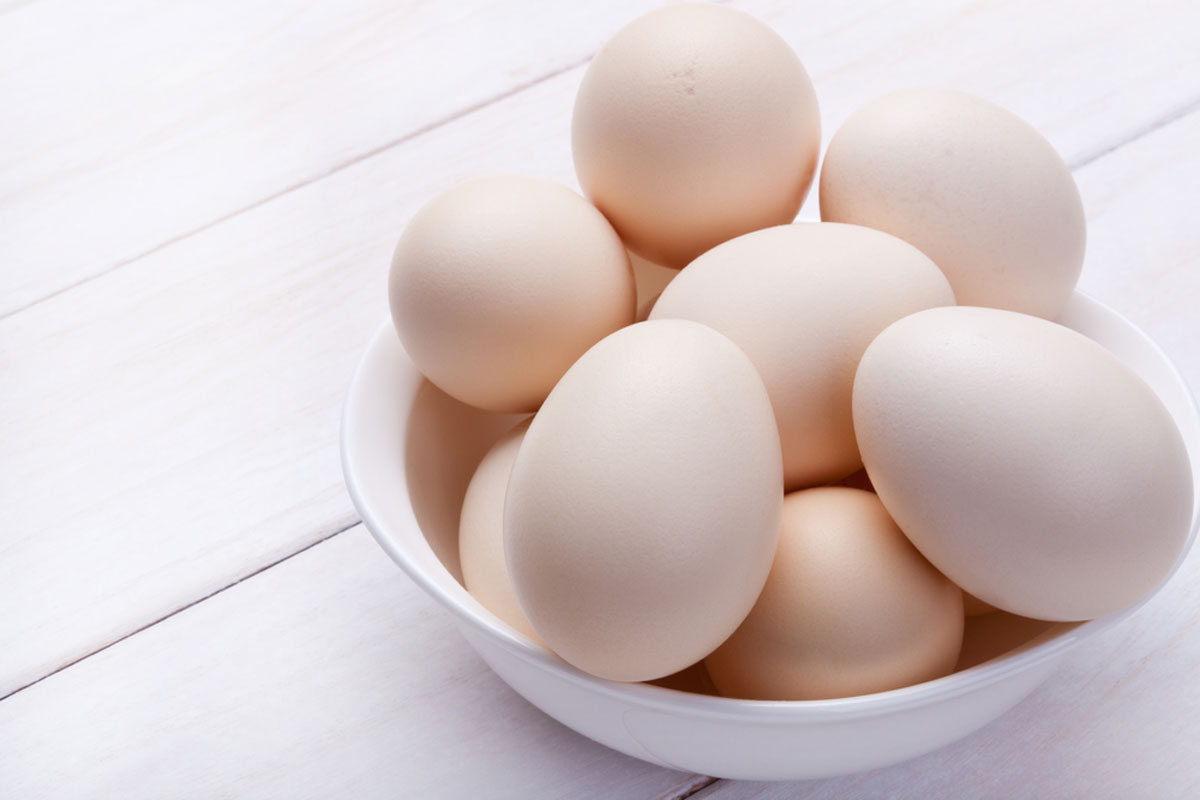The thing with baking is that it is edible chemistry. Precision counts! If you’re one of those who likes to cook intuitively – a pinch of this, a soupçon of that – the chances are good that you consider yourself to be someone who just cannot bake. We disagree! Anyone can bake – you just need to regard your recipe as a precise formula with exact measurements. Apply our top 10 tips for baking success, and you may well find yourself crowned the Queen of Tarts…
1. Sift your dry ingredients.
Yes, it can be a bit of a hassle but the light, fluffy, airy results will repay your efforts a hundredfold.

2. Invest in accurate measuring spoons and cups and a good kitchen scale, and use them properly every time.
Baking is a science and quantities need to be exact in order to get the correct chemical reaction between raising agents and remaining ingredients.
| TIP Don’t pack dry ingredients tightly into the cup when you’re measuring them – spoon them in lightly and level the cup or measuring spoon with a clean knife. |
3. Read the recipe from top to bottom, stick to quantities and methods religiously, and lay out all your ingredients before you even think of beginning.

4. Use fresh ingredients.
(Obvious, we know, but really important for delicious results.)
5. Preheat your oven for at least 20 minutes.
Get into the habit of turning your oven on to the recommended temperature before you even start measuring your ingredients. This is because recipes that call for a raising agent (such as self-raising flour, baking powder or bicarbonate of soda) need to be popped into the oven soon after the batter is mixed for the best results.
6. Bring your butter and eggs to room temperature.
Planning ahead is really useful: take the butter and eggs out of the fridge a few hours ahead of time – your butter will cream beautifully and eggs will be light, fluffy and voluminous.
| TIP Forgot to do this and you now have rock-hard chilled butter? Grate the butter using the large side of your cheese grater – it’ll come to room temperature much faster. |

7. Prepare your baking trays, cake tins or muffin pans properly before starting to mix your ingredients.
8. Use the middle rack of the oven
This allows hot air to circulate evenly around the food, resulting in even cooking.
9. Never open the oven to check on your sweet treats while they bake.
This lets all the lovely hot air out and cold air in, and the chances are high that your cake, cupcakes or muffins will collapse in a miserable heap, never to rise again! If you do need to take a peek close to the end of the recommended cooking time, open the oven door just a crack for as short a time as possible and close it GENTLY once you’re done.
10. Set a timer to go off at the end of the recommended cooking period.
Check cakes and cupcakes by inserting a fine metal skewer/toothpick – if it comes out clean, your goodies are done; if it’s sticky with a little batter clinging to it, cook for a while longer.
BASIC BAKING TECHNIQUES
These simple definitions will help those of you who you weren’t taught baking basics at your granny’s knee to decipher exactly what those recipe instructions mean…
| Beat Use a spoon, whisk or electric mixer to thoroughly mix ingredients and incorporate air.
Combine Stir two or more ingredients together until mixed. Cream Use a spoon, whisk, handheld beater or electric mixer to vigorously beat one or more ingredients – usually butter, sugar and eggs – until smooth, fluffy and pale. Cut in Work butter into flour using a knife to cut the butter into ever-smaller little lumps. (This gives a lovely flaky result.) Fold in Use a whisk, silicone spatula or large metal spoon to gently incorporate a light mixture or ingredient into a heavier mixture. Carefully cut through the mixture with the edge of your utensil, working in a gentle figure of eight and retaining as much air as possible. Turn the mixing bowl as you fold in, and scrape the sides down every now and then. Glaze Brush a light coating of milk or beaten egg over the top before baking to produce a shiny crust. Rub in/crumble Rub flour into butter using your fingertips until the mixture resembles breadcrumbs. Lift the mixture up as you work so that it stays a bit cooler, and shake the bowl occasionally to bring any large lumps of butter up to the surface. Grease Rub a very thin layer of melted butter or oil all over the pan (or coat it with cooking spray). This prevents food from sticking to the pan. Grease and flour Rub a very thin layer of melted butter or oil all over the pan (or coat it with cooking spray) and then dust it lightly with 1 to 2 tbsp flour and tap the pan to cover all sides with flour. Shake out any remaining flour. This helps prevent food from sticking to the pan. Line Cut baking paper to fit and line the baking tin or tray. This helps you to remove the cake easily from the tin when done. Scald Heat a liquid to just below boiling point. Sift Use a mesh sieve or flour sifter to break up clumps of dry ingredients, such as icing sugar, as well as to add air and mix dry ingredients such as flour, baking powder and spices. Soft peaks Beat an ingredient (usually egg whites or cream) until the mixture forms soft, rounded peaks that fall over when the whisk or mixer is removed. Stiff peaks Beat an ingredient (usually egg whites or cream) until the mixture forms stiff, pointed peaks when the whisk or mixer is removed. Stir Combine ingredients with a spoon, whisk or silicone spatula in a circular motion. Whip/whisk Use a whisk or electric mixer to quickly beat ingredients to add air and increase volume. |
BAKING ESSENTIALS
With so many things to choose from, figuring out what equipment you really do need as a novice baker can be confusing. We suggest you start off with the following basic baking equipment.
MIXING BOWLS
Our mixing bowls are essential for all bakers, with a ribbed rim allowing for easy grip. The depth of the mixing bowls assists in easy mixing and preventing splatter.
BAKEWARE
For fabulous results, novice bakers really can’t do better than to invest in our Toughened Non-Stick Bakeware range. It is made from heavy-gauge carbon steel that spreads heat gently and evenly; plus, the steel is so strong that your tins will never warp or twist with age. The range is coated with our brilliant non-stick surface inside and out, which prevents any sticking (and makes the tins really easy to clean). This TNS coating also cuts down on kitchen prep: the tins don’t need heavy greasing, flouring or lining – although you can use a light coating of cooking spray or butter to help your treats release with ease.
ACCESSORIES
Avid bakers will tell you that having the right tools at hand makes all the difference to how much you enjoy your time in the kitchen.
Accessories checklist
|
To view our full range of products, visit our online shop at www.lecreuset.co.za, or pop into your nearest Le Creuset Boutique store.
Comments